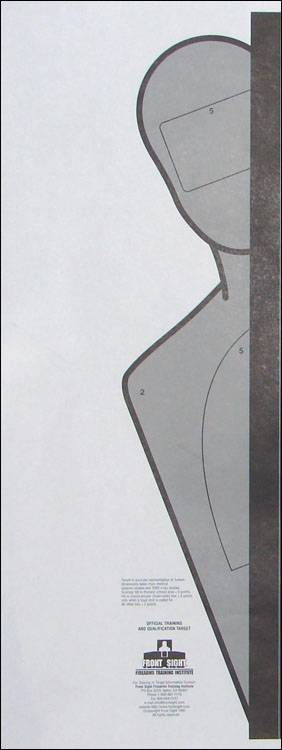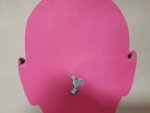Agreed. Please do post pictures, and don't be put off by beginner results, we all crawled first. Rifles have reach and can have precision.
But Personal Defense is largely about firepower combined with muscle memory. Beginners do it all the time, but the live ones practice, practice, practice. In 'Nam, an initial firefight was over in the time it took to do a mag dump, volume of fire was crucial, and my police friends all seem to think that, 'The first two end up in the dirt, the rest clear a hallway, and the time for deliberation comes after the combat reload'.
Dunno; I leave cop stuff to the cops. I keep a Ruger American Pistol Pro, and Ruger PC Carbine bedside, both handle the same 17rd magazines, of which I have 'several' containing 124gr HST's. I utterly dread using it ('Nam Memories), and have not done my homework with them anywhere near enough. I have 1000rd of 124gr FMJ that should have been shot several times over by now. I'm just another Joe regarding personal/home defense. I owe it to my family to correct that. Personal/Home Defense, like politics, is an art of the possible; and if you ain't currently proficient, it ain't possible. Thinking it is not enough.
The one time I did interact with police, my Brother and I stood down the instant the Newark NJ PD showed up said, "We got it, kid"; an education in itself. No shots fired, 'Nam had taught me fire discipline.
Athletically, I was very fast afoot before my illnesses and I miss it; but the twenty years past adds ample perspective. My Scouts always won the uphill mile run at summer camp, and they always found me waiting for them just before the the finish line. Pacing. Folks who don't train are sitting ducks; beating them gets embarrassing.
Best fortune. It's like riding bike; but marksmanship is always going to be a perishable skill. Use it, lose it, but not both.
Greg
Will do.
I am pretty good with a handgun. Train 2 to 3 times a month...or I should say practice as "training" would truly incorporate more real world stress and circumstance...NOT plinking holes in a stationary paper 21ft away. SOOOOOO much more involved in a real world setting, pulling a firearm from a CC, firing on a target WHILE they are pointing one back at you, or coming at you with another type of lethal weapon (knife, etc.), and possible movement of the target and/or YOU, and having to put one, likely more, rounds ON TARGET, and NOT arrant rounds that might hit innocents. THAT'S a whole different ball game MANY don't understand.
I get a kick out of people who say..."why didn't the officer shoot him in the leg" in circumstances like that...or an even better one...."Why didn't the officer just shoot the gun out of his hand instead of killing him".....REALLY, I simply can't. Just walk away with jaw dropped and shaking my head.
I had signed up for firearm training at the C.O.D. Homeland Security Center but COVID-19 ended that as the courses were cancelled. I will be taking them as soon as they open back up. Once finished....THEN I plan on doing the same with my new AR15.
Yes, I'm with you. I DREAD ever having to pull my firearm and use it....hope it NEVER happens. NOT something a responsible gun owner would want to have happen....BUT, today.....
My personal attitude, and this is simply my opinion nothing more, if one is going to be a responsible gun owner....one needs to be proficient (especially under stress) at using that firearm. I know people who go out and by a firearm, and have NEVER fired that weapon, keeping it in their house with the idea they might have to use it. This is NUTS to me....even more nuts if one has a CC license and doesn't get some type of training beyond their CC class. Again, just my opinion.
It will be interesting if ANY of my skill set with a handgun will transfer over at ALL. Likely not as the sight picture is so limited with a handgun....PLUS, I am left eye dominant and right handed which posses little issue with a handgun....MUCH more of an issue with a rifle....which I am about find out.
A couple pics of handgun practice, on good days for ya. Keep in mind this is slow fire, trigger controlled, stationary target, seeking solid sight picture....NOT draw from concealed, point and shoot, where the spread does have significant increase over these pics.
Firearm: Sig P229 w/combat sights (Sig XRay) 9mm
Training Ammo: 9mm Speer Lawman 124grn TMJ
Self Defense Ammo: 9mm Federal Premium LE Tactical HST HP (I believe same as you)
First pic is 5 training rounds at 25ft Center Mass
Second pic is 5 training rounds at 25ft...+2 cartilage piercings, LOL.....Head Shots
Once I zero in the rifle I will take my pics of what happened and post them.....unless the paper is empty of holes....than, ah, maybe not....LOL







